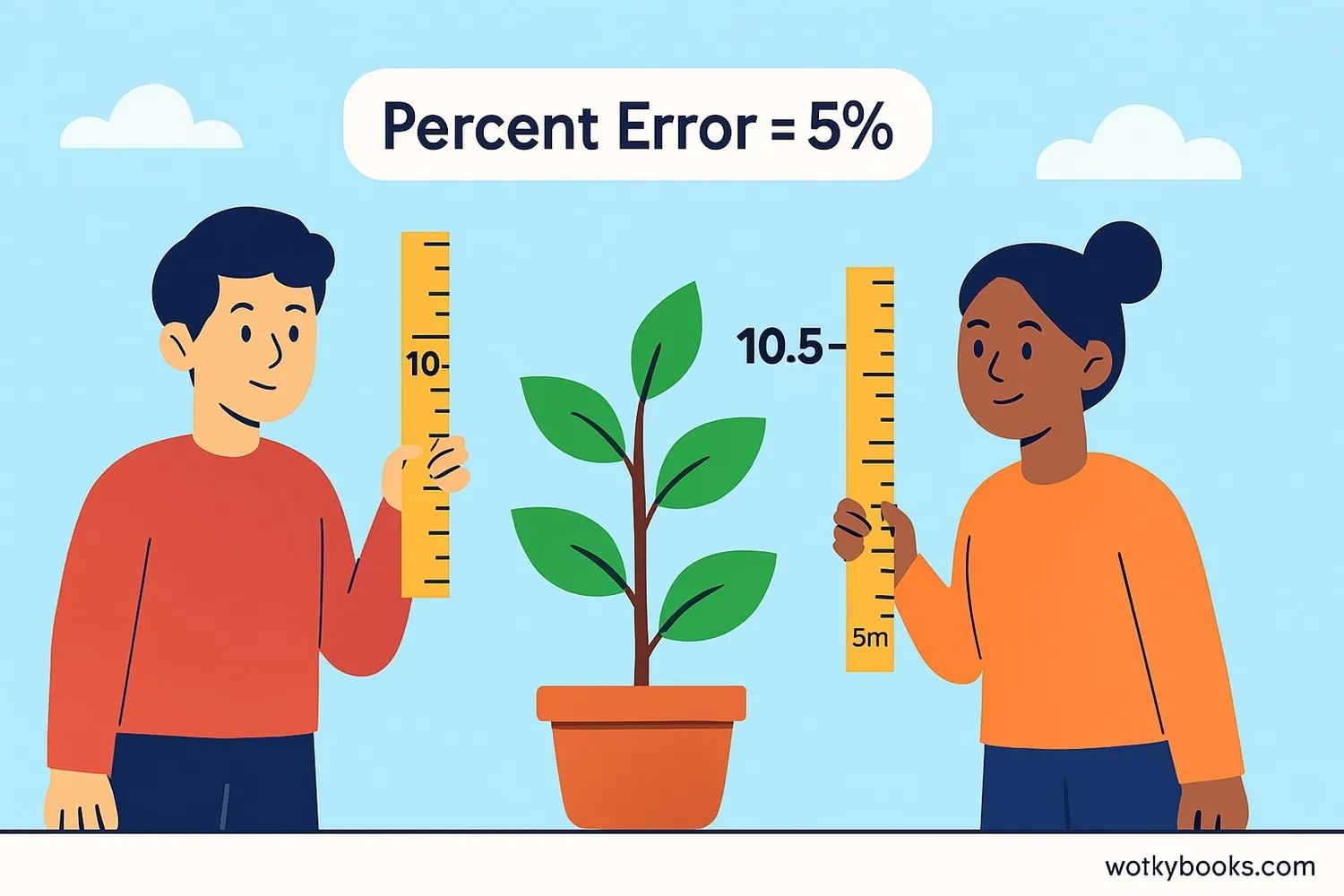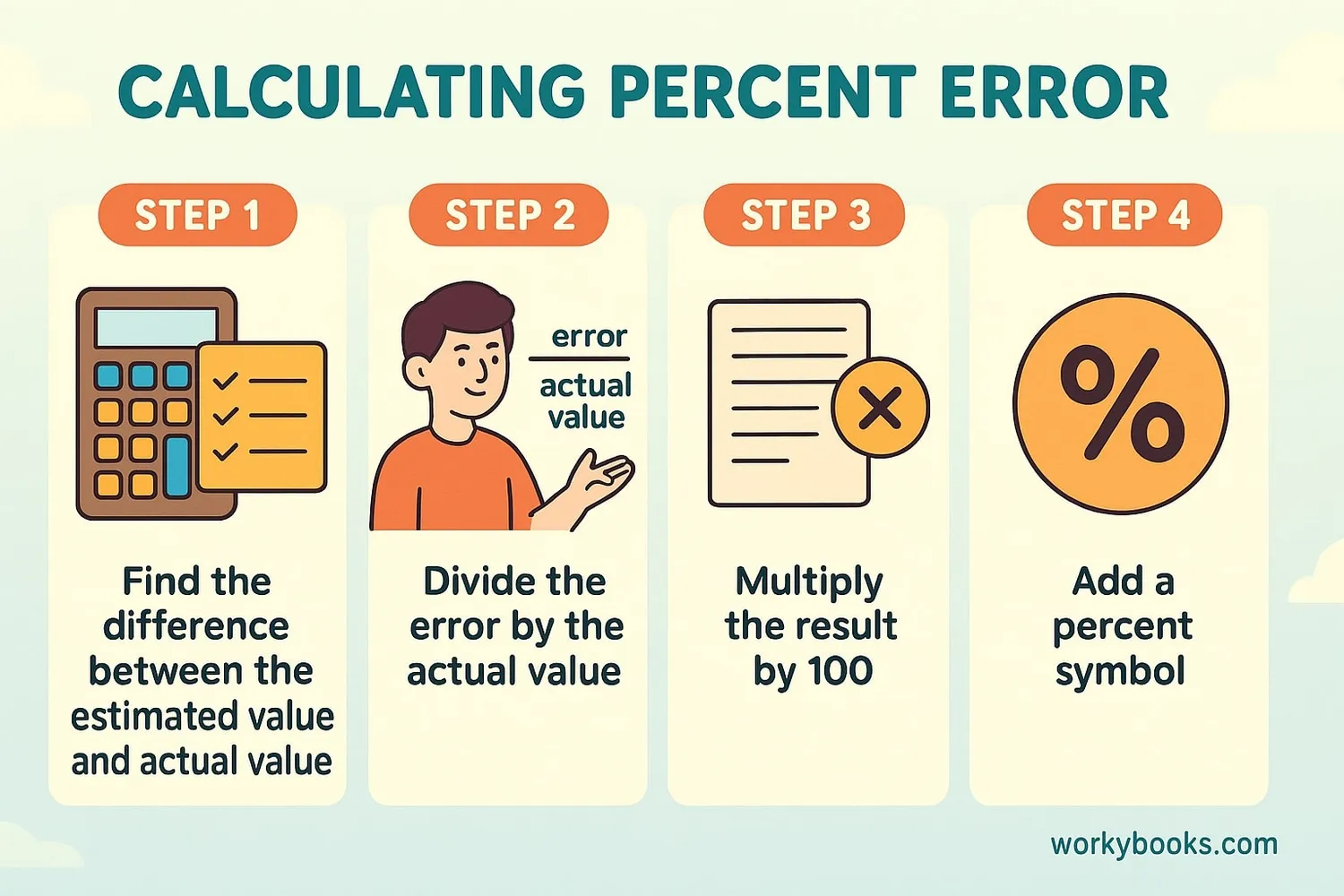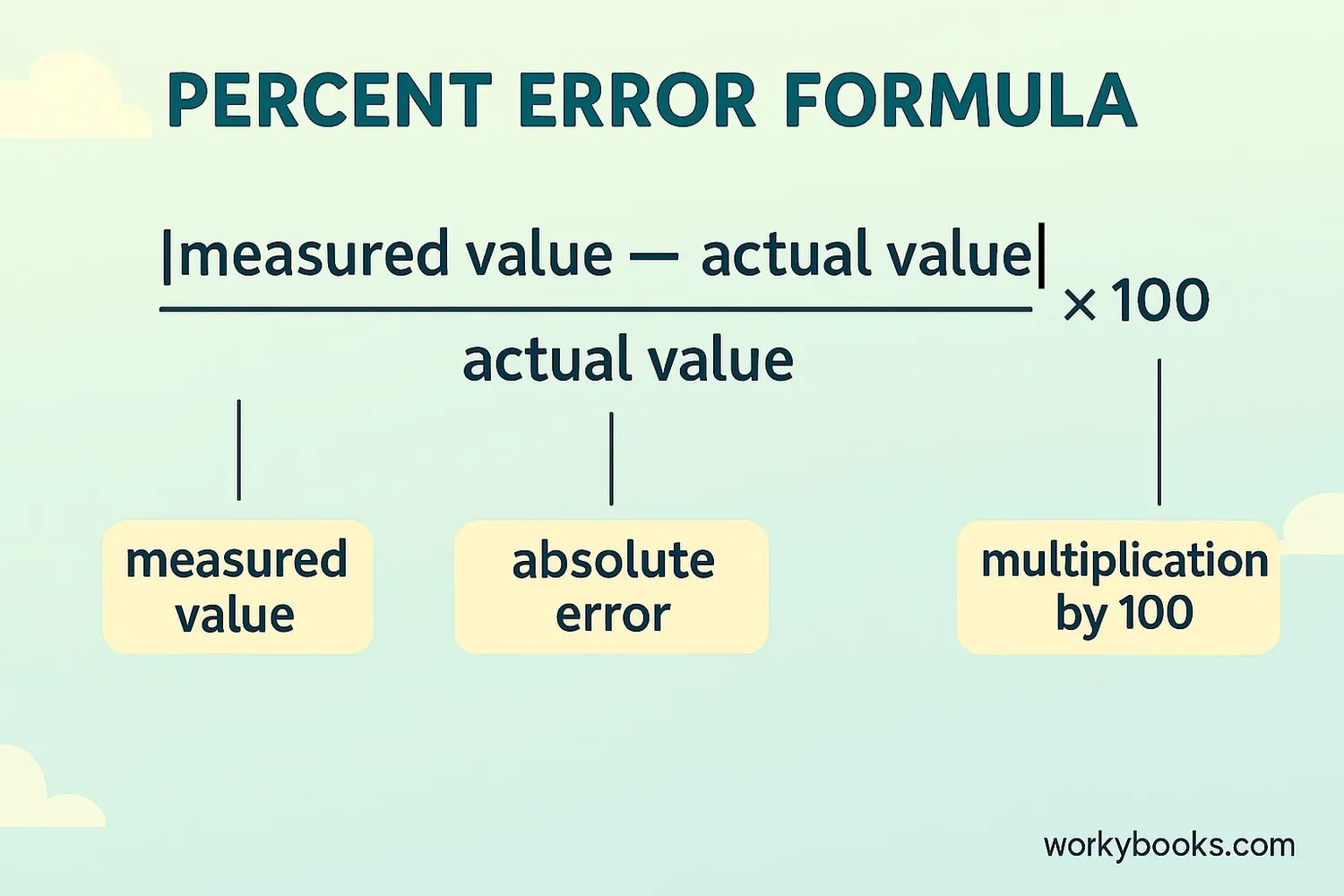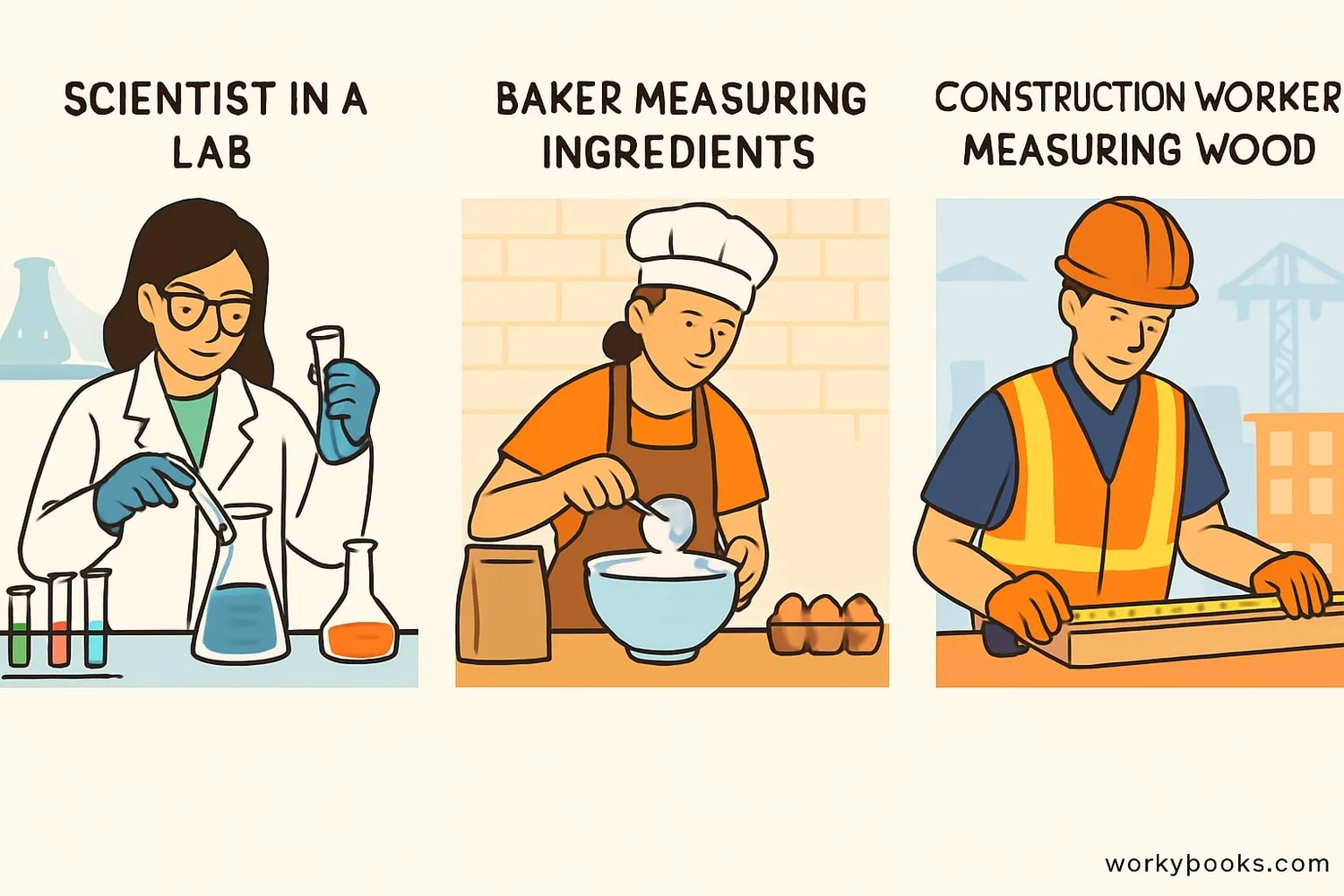Percent Error - Definition, Examples, Quiz, FAQ, Trivia
Learn how to calculate and interpret percent error with easy explanations and practice activities
What is Percent Error?

Percent error helps us understand how accurate our measurements are. It tells us the difference between a measured value and the actual value as a percentage.
Why is percent error important? When scientists, engineers, or even students take measurements, there's often a small difference between what they measure and the true value. Percent error helps us understand how big that difference is relative to the true value.
Absolute error is simply the difference between the measured value and the actual value. Relative error is the absolute error divided by the actual value. Percent error is just the relative error multiplied by 100 to make it a percentage.
Key Concept
Percent error = |(Measured Value - Actual Value)| / Actual Value × 100%
How to Calculate Percent Error

Calculating percent error is simple when you follow these steps:
- Identify the measured value - The value you obtained from your measurement
- Identify the actual value - The true or accepted value
- Calculate the absolute error - Subtract the actual value from the measured value (ignore the sign)
- Divide by the actual value - Then multiply by 100 to get a percentage
Calculation Steps
Remember to take the absolute value of the difference to make sure the error is always positive!
Example Calculation
You measure a book as 21.5 cm long, but its actual length is 20.0 cm.
Step 1: Measured = 21.5 cm
Step 2: Actual = 20.0 cm
Step 3: Absolute error = |21.5 - 20.0| = 1.5 cm
Step 4: Percent error = (1.5 / 20.0) × 100% = 7.5%
Remember
A smaller percent error means your measurement is more accurate. A larger percent error means there's more difference between your measurement and the true value.
Percent Error Formula

The percent error formula is:
Percent Error Formula
Where M = Measured Value, A = Actual Value
Key Components:
- Absolute Value (| |) - Makes sure we always have a positive error value
- Measured Value (M) - The value you got from your measurement
- Actual Value (A) - The true or accepted value
- Division by Actual Value - Makes the error relative to the size of what you're measuring
- Multiplication by 100 - Converts the fraction to a percentage
Mean Absolute Percentage Error (MAPE)
When scientists take many measurements, they sometimes calculate the Mean Absolute Percentage Error. This is the average of all the percent errors from multiple measurements.
Real-World Examples

Let's explore some examples of percent error in real life:
Example 1: Science Lab
A student measures the boiling point of water as 99.1°C. The actual boiling point is 100°C.
Percent error = |99.1 - 100| / 100 × 100% = 0.9%
Example 2: BakingA recipe calls for 250g of flour. You measure 245g.
Percent error = |245 - 250| / 250 × 100% = 2.0%
Example 3: ConstructionA carpenter cuts a board to 183cm when it should be 180cm.
Percent error = |183 - 180| / 180 × 100% = 1.67%
Percentage Difference vs. Percent Error
Percent Error compares a measurement to a known value.
Percentage Difference compares two measurements when neither is considered "correct".
Formula for percentage difference: |Value1 - Value2| / ((Value1 + Value2)/2) × 100%
Practice Quiz
Test your understanding of percent error with these practice questions:
Frequently Asked Questions
Here are answers to common questions about percent error:
Measurement Trivia
Discover interesting facts about measurement and accuracy:
Ancient Measurements
The ancient Egyptians used body parts for measurements. A "cubit" was the length from the elbow to the tip of the middle finger - about 52.4cm. Imagine the percent error between different people's cubits!
Scientific Precision
Scientists at the Large Hadron Collider measure particles with percent errors as small as 0.0001%. That's like measuring the distance from New York to Los Angeles with an error of just 40cm!
Space Measurements
When NASA sends spacecraft to Mars, they calculate trajectories with incredibly small percent errors. A 0.01% error in course calculation could mean missing Mars by thousands of kilometers!
Most Precise Measurement
Scientists have measured the mass of an electron with a percent error of just 0.0000000013%. That's like weighing all the water in the Pacific Ocean and being off by less than a drop!


